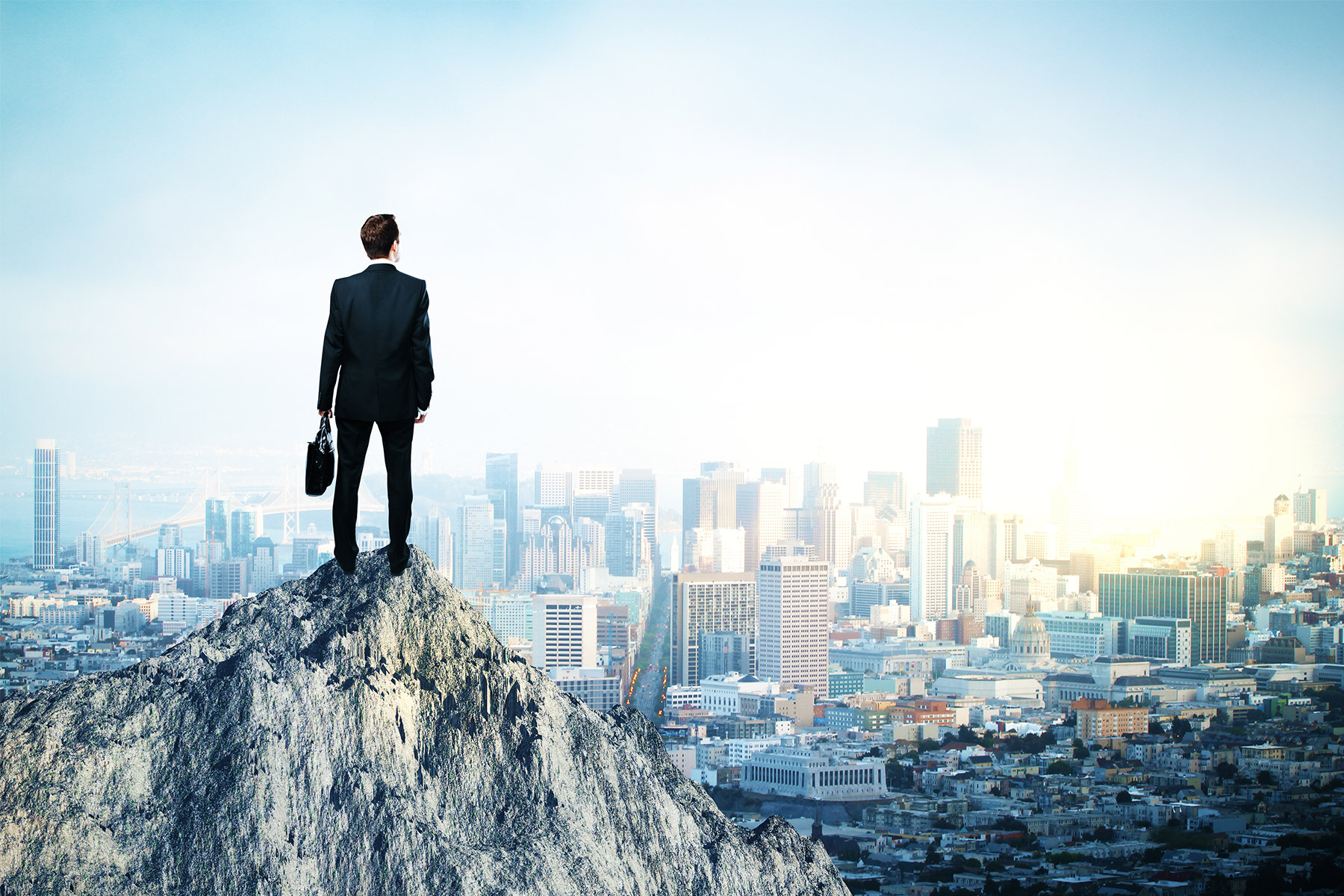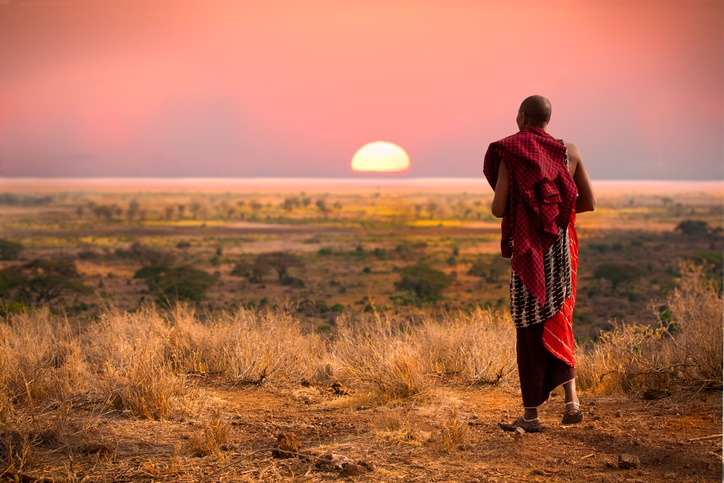As corporate anthropologists who love to go exploring, we have been reflecting on our recent safari in Tanzania and thinking about the changes facing the Maasai, one of the many indigenous tribes in this lovely East African country. They powerfully illustrate the challenges facing any society — or company, for that matter — and how perhaps a little anthropology might help business leaders and their organizations survive these fast-changing times. We’d like to share with you here some of the ways we thought “across cultures” on our vacation.
5 key lessons we learned from the Maasai that might help you as well
As you travel through Tanzania, a post-colonial nation that is trying to meld 120 or more tribes (as well as Arabs and Indians) into one country, you see the Maasai tending their cattle, goats and sheep in the areas bordering the Ngorongoro Crater. There are over 800,000 Maasai living in Tanzania and 840,000 in Kenya. Nomads who for generations wandered throughout the country, the Tanzanian Maasai have been relocated by their government a number of times. Today, they and their herds have had to settle in the grasslands that surround the caldera of Ngorongoro Conservation Park, a huge wildlife preserve containing more than 20,000 wild animals.
While we loved our safari expedition into the crater, what really captured our interest were the enormous changes and difficult challenges confronting the Maasai as they reluctantly try to adapt their traditions (those sacred “ways we do things here”) to a new way of life in order to remain viable, both economically and as a culture.
We thought you might find their stories and the lessons contained therein of value, particularly if you too are coping with the demands of rapid change in your environment.
-
Changes have to make sense in the cultural story which the Maasai are re-crafting as their young men, and young women, try to understand their new places in the world.
Storycrafting and storytelling are very important ways in which the brain makes sense of facts. As we explored the Maasai territory, we were fortunate to be able to visit a Maasai village, stop by a local Maasai market and travel with a Maasai guide (I’ll call him Olenkira) who introduced us to the local culture. His was the “new story” that we found so interesting.
Olenkira greeted us wearing his shuka (the red cloth coverings typical of the Maasai) and beautiful beaded bracelets on his wrists. But it did not take long for us to realize that he was not like other Maasai men. Olenkira was, like a growing number of Maasai, slowly changing his values, beliefs and rituals — his very lifestyle and culture — as he found work outside of the traditional nomadic life of herding cattle.
For one thing, as he proudly told us, he has only one wife (most Maasai men have multiple wives, each with her own hut and children). He has four sons, and is sending them to school — not something every Maasai does. He still has his cows, sheep and goat herds but his success, he told us, is not going to be measured only by the size of his cattle herds (maintained by family members).
Olenkira’s sons are not going to be herders, he assured us. He wants them to have jobs as he has (he is a trained employee of the lodge where we stayed). Yet while he stays in the lodge’s staff housing, he continues to wear his customary shuka cloth clothing (preserving their traditional dress is important to the Maasai) and wrist bands (worn only by men). His story has become a blended one: part old and part new, but all of it important to who he is, personally and as part of a changing culture.
-
The past seems like it should remain forever. Yet, change has come, even to the Maasai. And, it is changing our guide’s life.
It was when we visited the Maasai in their Bomba village with enkaj huts traditionally made of sticks, grass, cow dung and ash, and watched them herd and milk their cows, collecting the milk in small gourds, that we realized that little has changed throughout the centuries for most Maasai. They walk miles every day, either herding cattle, goats and sheep or taking maize to the local market to sell or barter. Donkeys are plentiful but are beasts of burden, none are ridden. Walking is what the Maasai do. But, with shrinking land for grazing and smaller herds for their basic sustenance, the Maasai are facing major disruptions to their traditional lifestyle, changes that are impacting them greatly.
For Olenkira, his future is contingent on Tanzania’s growing tourism industry which depends upon its game park safaris where tourists come to experience the amazing wildlife. He speaks English quite adequately and is very proud of his education. And he is very good at his job, explaining the Maasai culture to foreigners and educating them about the ways in which this culture is changing.
Yet, as anthropologists, what struck us was how the “new life” described by our guide reflected his adaptations to these changes. It seemed so similar to the work we do helping businesses and individuals change their stories as they adapt to new times.
-
New technology is potentially transformative, even among the nomadic Maasai.
In the Maasai village we visited, we realized that there was no electricity nor running water. We occasionally saw some solar power in a few Bomba. Was there any role for technology in this environment?
Perhaps. During our visit, we were able to take pictures of some individual tribal members, mostly women and children. (Others put their hands up to their faces, not wanting to be photographed.) Even though they allowed us to do this, we realized that they did not know what a camera or a picture was, although we were sure other tourists had similarly come with cameras.
We soon learned from Olenkira that the Maasai in this village had no mirrors, and that, to them, the images we showed them on our iPhones were of something but not of them. They liked swiping our phones’ screens but were not interested in looking at the images themselves, which had no meaning for them. We were struck by their curiosity and quick willingness to interact with the devices, even if they had no idea what they were. In essence, they were open to new technology and curious about its possibilities, much like unrelenting technological changes in the business world. Or perhaps we were imposing upon them our own curiosity and values. Hard to say.
The question we asked ourselves: Could the Maasai, and particularly their children, capitalize on their curious minds?
-
Unbeknownst to the Maasai, global warming is impacting them — seriously.
Something of major importance to the Maasai is the failure of the rains to come. There has been no rain for a month in Arusha, an agricultural area near Kilimanjaro. The rains typically arrive in December and January, yet it was almost February and none had come. Certainly, this is not the first drought they have faced. But unless they can migrate to better grazing land, their very way of life is threatened.
To the Maasai, the impact of the late rains is very serious. The streams were dry and the grass was barren. There are no easily accessible wells, causing tribal members to walk miles to the nearest source to fill up large containers for their drinking water.
As a result, the cattle are producing less milk for their calves and also for the human families their milk supports. Maasai survive on the milk and blood of cows, along with some meat from goats and sheep — they have no other food sources. Yes, they produce a few crops but they almost exclusively rely on the herd for their sustenance. When the prices are high, they often take their cows to market to sell, but prices have fallen as their cows’ health has deriorated due to lack of water.
Global warming is not something the Maasai understand or even know about. But they definitely are feeling its impact on their grasslands and livestock, and on their food supply. Their solution? Take their herds further and further afield in search of water and grass. Yet with the national conservation areas limiting their grazing lands and the neighboring Serengeti off limits to them, they must rethink their traditional way of life as they struggle to survive.
-
Cross-cultural observations of the Maasai can help all of us reflect on our businesses facing cultural change.
The Maasai are not a billion dollar company struggling to compete in a commoditized market. Yet in many fundamental ways, they are facing similar issues and challenges as the corporate world — namely, the pain of change. For both the Maasai and a corporation, ways to adapt to the future are right in front of them (e.g., Olenkira’s job as guide, not herder) but the path to putting them into practice is foggy.
True, American businesses are not making houses out of cow dung. But individuals are still facing major changes that are impacting their business every day, as well as their personal lives and the stories they tell about those lives.
Neither are American consumers walking miles every day to get their water instead of taking modern transportation. But Uber is challenging even the need to own a car. And over the next few years, new disruptions are going to require us all to develop a “try it and see what works” mentality, because make no mistake, big changes are coming and we need to prepare for them — from the expansion of blockchain systems to driverless vehicles to the proliferation of robots and machine intelligence.
Maybe the Maasai will have to get on the grid and find new ways to educate their children so they can find jobs outside of herding. As we were departing, we spoke with an American missionary who is diligently working to help change the Maasai. He knows that a complex cultural transformation needs to take place, beyond just reimagining their tradition role as nomadic cattle herders. For the Maasai to survive, Tanzania will have to help them find ways to create industries with jobs which their young people can embrace.
Whether in Tanzania or Texas, how can cultures adapt to changing times? Look to the youth.
Perhaps the truest lesson we learned on our safari is the classic observation of anthropology: Inevitably during fast-changing times, cultures must build new strategies to adapt or risk being left behind, which means constructing new stories.
It is during this process of creating new strategies and new stories that people often find the fastest paths to change come from the next generation — today’s millennials who are beginning to influence everything, it seems. Come to think of it, our guide Olenkira is as millennial as those we work with here in the U.S., full of ambition, hope and a new way of doing things. Yes, he is the future.
Helping companies overcome their resistance to change is what SAMC is all about.
At Simon Associates Management Consultants, we help organizations change. Specifically, we use the tools and methods of anthropology to help business leaders see their companies with fresh eyes and discover new, innovative solutions and uncluttered market space that often is right in front of them. Rather than competing in a red ocean made bloody with competition, we show them how to find their Blue Ocean Strategy® and make the competition irrelevant. Yes, real change can happen — we see it all the time. But it takes work and top-to-bottom commitment from all involved.
In my book “On The Brink: A Fresh Lens To Take Your Business To New Heights,” I share the stories of seven clients who were stalled and used a “little anthropology” to see the opportunities right in front of them with fresh eyes, enabling them to embark on serious change. They, like the Maasai, were comfortable with their old habits and didn’t want to see their threatened-by-change reality in a new way. They were fighting the new, holding onto the past and discounting the vast potential of change. But once they had their own “aha” moments and saw the future that was all around them, these clients grabbed hold of the new vision and soared.
Hopefully, the Maasai can do the same, finding ways to safeguard the old ways while creating new ones, all necessitated by change. Only time will tell.
Want to know more about how “a little anthropology” could help your business?
Here are three of our most popular blogs on the topic, showing you how to “see, feel and think” in new ways so you can discover innovative, transformative solutions.
- Easy-to-Use Anthropology Tool Kit to Grow Your Business
- Why is Corporate Anthropology Good for Your Business
- Managing Change in Fast-Changing Times
Or grab a copy of my book
We do hope you can take these lessons from a very far away, very beautiful culture and apply them to your own. There are so many ways cross-cultural insights can help us cope with the challenges we face every day. As always, we’d love to hear your thoughts; please contact us.
From Observation to Innovation,

Andi Simon, Ph.D.
Corporate Anthropologist | President
Simon Associates Management Consultants
Info@simonassociates.net
@simonandi



